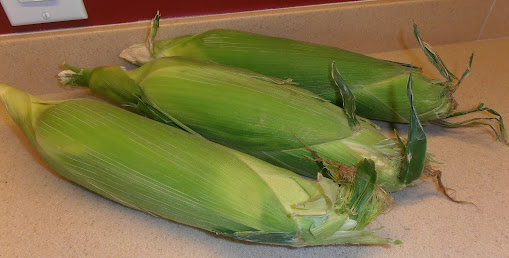On page 57 of Miss Pinedo's book, I found a recipe that described a stew that features a dried corn product called "chicos." The recipe was simple: first it described how to make the chicos, then said how to make the stew.
A look around the internet lead me to some New Mexico sites. Edible New Mexico says this:
Chicos are dried kernels of sweet corn, traditionally roasted in an horno. Once rehydrated, they taste just like the sweetest roasted summer corn you’ve ever had, intensified. This is serious New Mexican food, completely obscure outside of the state, and even many who grew up here have never tried them. I’ve never seen them in a restaurant, but they are worth seeking out. They’re actually listed on the U.S. Ark of Taste, a catalog of outstandingly delicious traditional foods in danger of extinction.
I looked, but I could not find any reference to chicos in the Ark of Taste site. However, I believe that chicos are probably not well known outside of New Mexico and most likely not well known in that state. Which is surprising because corn isn't a hard ingredient to acquire.
I happened upon a big pile of fresh corn at the market, so I decided to make chicos.
Chicos.
Despues de cocidos los helotes, se ciman y se pone á secar el maiz en el sol. Se guarda en un lugar seco.
Cuaudo se necesita, se toma la cantidad necesaria y se cocina.
Poned el maiz despues de bien cocido en salsa de tomate ó se guisa con chile colorado y queso rallado.
Chicos.
After the corn cobs are cooked, their tops [are removed] and put out to dry in the sun. Store in a dry place.
When needed, take the necessary amount and cook.
Put the well-cooked corn in tomato sauce or it is stewed with red chili and grated cheese.
My three fresh ears of corn were put on a tray into a 170 degree F oven for 10 hours, then allowed to cool in the oven for 2 hours, then on the counter overnight.
 |
| Fresh from the market |
 |
| After slow cooking for ten hours. |
After that, I pulled back the husks and removed the silks.
 |
| Beginning to dry. |
 |
| After 2 weeks of drying |
 |
| Close up of two weeks of drying |
I let them dry for two weeks. I noticed that the kernels were separating and they started feeling harder and not as moist. They had also turned a more golden rather than bright yellow.
 |
| After nearly 4 weeks of drying |
The kernels were easily rubbed off the cobs, which I let fall onto a tray. There were some small membrane-like pieces that joined the kernels. Most of those I kept in with the kernels. The rest I could blow with my breath. I suspect winnowing the kernels in a wide basket would remove this if I really felt the need.
 |
| Off the cob |
 |
| Mold? |
When I originally translated the recipe, I thought the husks were supposed to be pulled up and tied, but after seeing this I reread what Miss Pinedo had written, "they were topped", and realized that she probably meant the husks were supposed to be removed, as the website I referenced said.
 |
| Black spots are mold. |

No comments:
Post a Comment